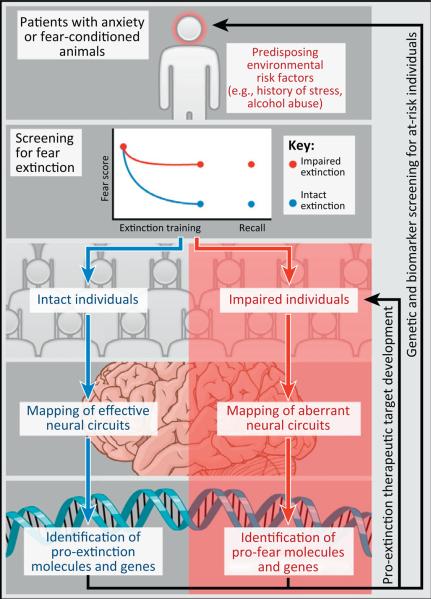Figure 2.
A strategy for advancing the neurobiological understanding and future treatment of post-traumatic stress disorder (PTSD) by screening for individual differences in fear extinction. The ideal subject pool is a population of individuals with trauma-related anxiety disorders, or fear-conditioned animals, ideally with detailed biographical and/or experimental information on exposure to predisposing environmental risk factors, such as stressful life events and alcohol abuse. Following screening for fear extinction, individuals are selected on the basis of impaired versus intact extinction and compared for aberrant versus effective neural circuit function, respectively. This provides a basis for identifying specific molecules and gene variants underlying these circuit variations, which in turn can lead to pro-extinction therapeutic target development to benefit existing patients, as well as novel biomarkers for the future screening of individuals at elevated risk of trauma-related anxiety disorders.

